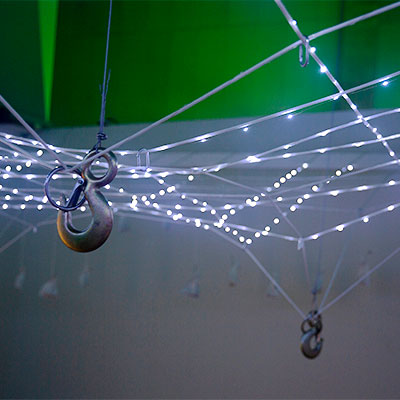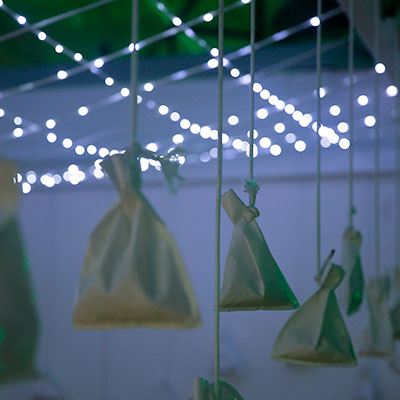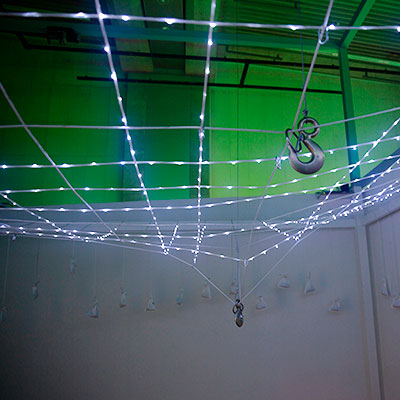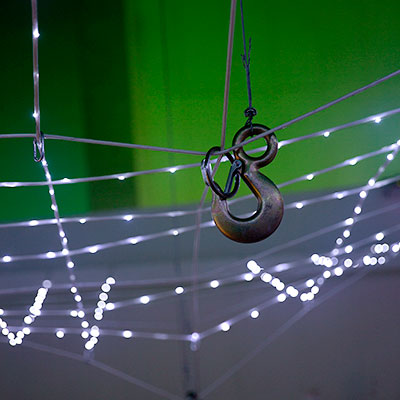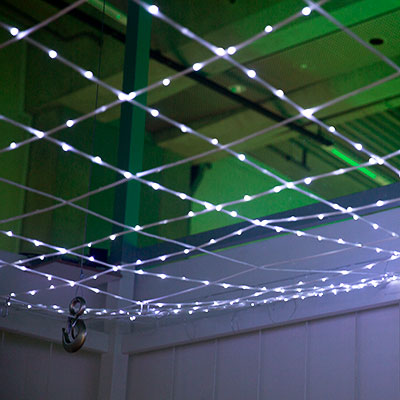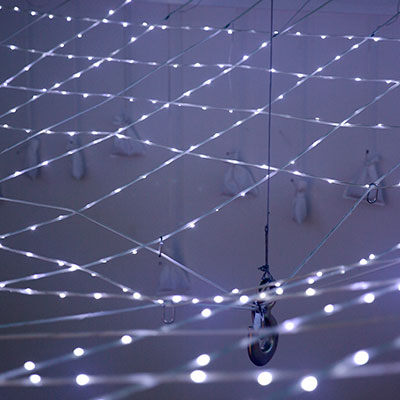Johnny DiBlasi
Light emitting diodes, polypropylene rope,
counterweights, custom electronics, custom software
2019
hidden layer is a bio-technological, kinetic sculpture
that utilizes custom software and hardware to create a generative representation of bio-data in real time.
In the United States ‘precision farming’ is the term used to describe the processes of
using technologies and sensors to gather data in order to target resources for crop production.
These technologies are tools used to understand, monitor, and control organic systems. Johnny DiBlasi’s
work is an ongoing inquiry into these invisible data structures within the landscape. He creates
public installations where all these various inputs—specifically data signals,
the public, and the broader ecology—are connected, and a tension with and awareness of the invisible
digital architecture is explored through the public’s experience.
hidden layer is a site-specific installation that utilizes sensors to gather data
from various spaces both in the natural environment and the constructed urban spaces
around the site of the artwork. Various biosensors are setup within the space that
capture organic and environmental information and transcode this data into
physical form and light. This data will drive the representation of a large
physical grid or mesh comprised of strands of light emitting diodes
while live sound waves create a sonic representation at the site.
hidden layer explores how this bio-data can be captured and its potential to
generate an immersive and aesthetic experience of the local ecosystems.
